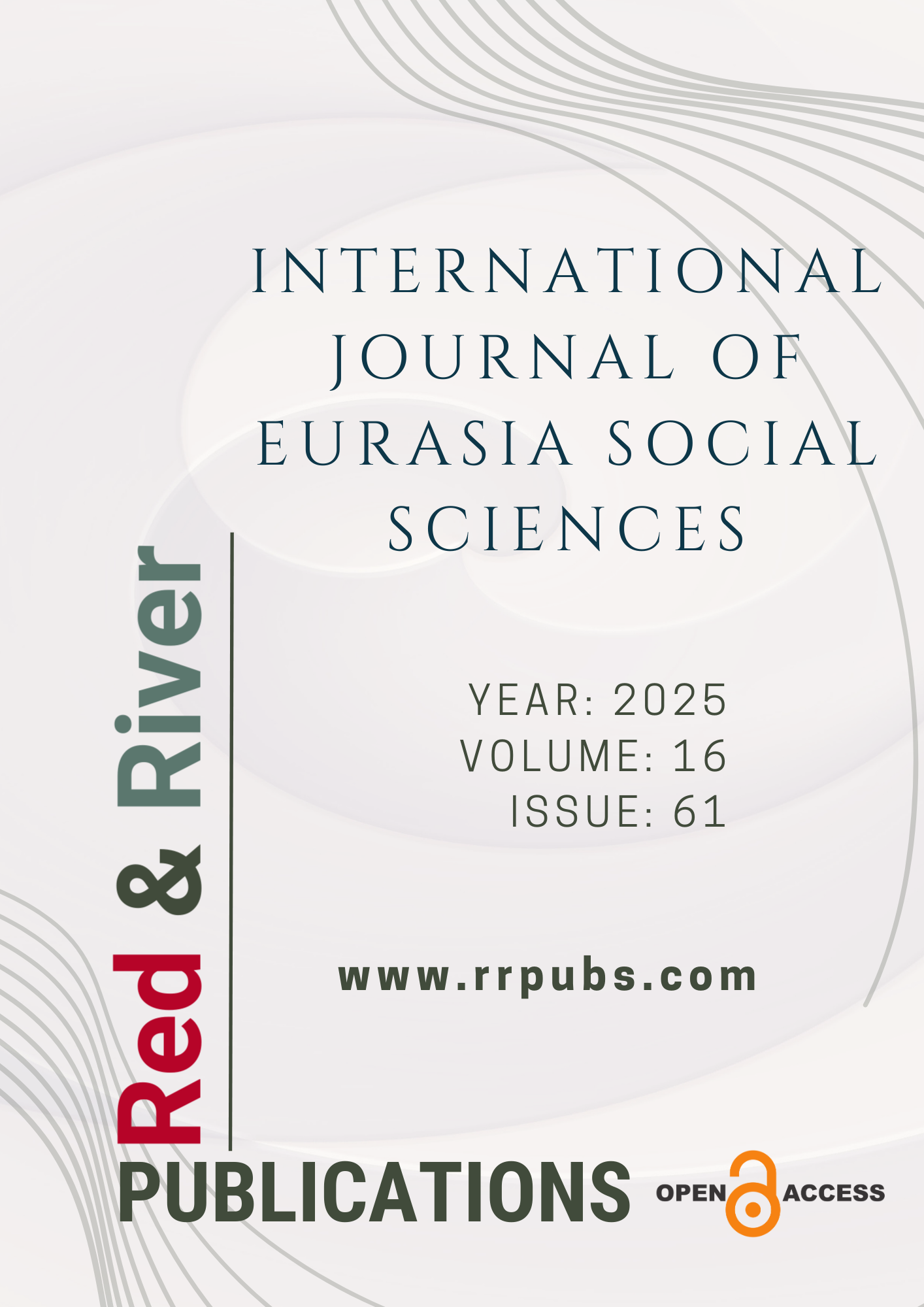The innovations brought by digitalization in the fitness sector and business owners perspectives on these innovations
DOI:
https://doi.org/10.70736/ijoess.1781Keywords:
Digital transformation, Fitness sector, Customer experience, TAM and UTAUT, Technology acceptanceAbstract
This study aims to examine the adoption process of digital technologies in the fitness sector within the framework of the Technology Acceptance Model (TAM) and the Unified Theory of Acceptance and Use of Technology (UTAUT). Beyond its technical dimensions, digitalization is also evaluated through cultural, social, and strategic lenses. Key variables explored in the study include user experience, competitive pressure, and perceptions of future technologies. The research employs a qualitative design, utilizing semi-structured interviews with managers of six private fitness centers operating in Turkey. Data were analyzed using thematic analysis, and the coding process was supported by both manual techniques and digital tools (MaxQDA, ChatGPT). The analysis revealed nine main themes and sixteen sub-themes. Participants emphasized that digital systems offer time savings and operational convenience; however, they also highlighted challenges such as staff training, financial burdens, and the difficulty of maintaining emotional bonds with clients. Additionally, it was observed that social influence is shaped by competition and observational learning, while projections regarding advanced technologies such as artificial intelligence drew particular attention. Although TAM and UTAUT provided valid insights in the context of the fitness industry, the integration of variables such as emotional experience, customer loyalty, and organizational support is recommended. The findings underscore that successful digital transformation requires not only robust technical infrastructure but also comprehensive staff training, managerial backing, and the preservation of emotional connections with clients. Furthermore, the study suggests developing sector-specific guidelines for service-oriented domains like the fitness industry, increasing governmental support, and expanding classical technology acceptance models by incorporating emotional and organizational factors.
References
Ammenwerth, E. (2019). Technology acceptance models in health informatics: TAM and UTAUT. Studies in Health Technology and Informatics, 263, 64–71. https://doi.org/10.3233/SHTI190111 DOI: https://doi.org/10.3233/SHTI190111
Benelli, F., Maciariello, F., & Salvadori, C. (2024). The influence of technologies on organizational culture in innovative SMEs. Journal of Robotics and Automation Research. 5(3), 01-11 https://doi.org/10.33140/jrar.05.03.04 DOI: https://doi.org/10.33140/JRAR.05.03.04
Berger, R., & Martin, J. (2007). Explaining the adoption of value metrics in retail banks. European Accounting Review, 16(3), 455–480. https://doi.org/10.1080/09638180701507142
Çelikel, B. E., Tan, S., & Tokgöz, G. (2025). Investigation of warm-up knowledge levels of sports sciences faculty students. Mediterranean Journal of Sport Science, 8(1), 141-151. https://doi.org/10.38021/asbid.1636513 DOI: https://doi.org/10.38021/asbid.1636513
Davis, F. D. (1989). Perceived usefulness, perceived ease of use, and user acceptance of information technology. Management Information Systems (MIS) Quarterly, 13(3), 319–340. https://doi.org/10.2307/249008 DOI: https://doi.org/10.2307/249008
Deep, G. (2023). Digital transformation's impact on organizational culture. International Journal of Science and Research Archive. 10(0), 396–401. https://doi.org/10.30574/ijsra.2023.10.2.0977 DOI: https://doi.org/10.30574/ijsra.2023.10.2.0977
García-Fernández, J., Valcarce-Torrente, M., Gálvez-Ruiz, P., & Mohammadi, S. (2022). The challenges of digital transformation in the fitness industry in the world. Emerald ublishing Limited. (pp. 1-3). https://doi.org/10.1108/978-1-80117-860-020221001 DOI: https://doi.org/10.1108/978-1-80117-860-020221001
Ismail, A. N., Widyanto, S. E., Kustiawan, U., & Rakhmatullah, A. (2024). Exploring behavioral intention and digital competency toward technology adoption in sport education. International Journal of Instruction, 17(1), 225–240. https://doi.org/10.29333/iji.2024.17113a DOI: https://doi.org/10.29333/iji.2024.17113a
Jäntti, M., & Hyvarinen, J. (2018). Exploring digital transformation and digital culture in the service sector. Information Technology and Management, 19(4), 233–245. https://doi.org/10.1007/s10799-018-0282-2
Kim, J.-H., & Kang, E. (2023). An empirical research: Incorporation of user innovativeness into TAM and UTAUT in adopting a golf app. Sustainability, 15(10), 8309. https://doi.org/10.3390/su15108309 DOI: https://doi.org/10.3390/su15108309
Lee, A. T., Ramasamy, R. K., & Subbarao, A. (2025). Understanding psychosocial barriers to healthcare technology adoption: A review of TAM and UTAUT. Healthcare, 13(3), 250. https://doi.org/10.3390/healthcare13030250 DOI: https://doi.org/10.3390/healthcare13030250
Maruping, L. M., & Magni, M. (2008). What’s the weather like? The effect of team climate and team performance on technology use. Information Systems Research, 19(1), 18–33. https://doi.org/10.1287/isre.1070.0148 DOI: https://doi.org/10.1287/isre.1070.0148
Molchanova, V. S. (2023). Digital transformation directions of the service sector in the context of the implementation of national goals. Journal of Business and Economic Development, 8(2), 52–57. https://doi.org/10.11648/j.jbed.20230802.13 DOI: https://doi.org/10.11648/j.jbed.20230802.13
Ndubueze, I. F., Osman, M. N., Hasan, N. A. M., & Waheed, M. (2024). Evaluating technology adoption model on agro-small performance in Selangor, Malaysia. Quantum Journal of Social Sciences and Humanities, 5(6), 38–54. https://doi.org/10.55197/qjssh.v5i6.466 DOI: https://doi.org/10.55197/qjssh.v5i6.466
Nikougoftar, N., Heydariyeh, S. S., & Hajighasemi, S. (2025). Providing a model for digital transformation of customer experience in the insurance industry. Iranian Journal of Information Processing and Management, 40(1), 125–145. https://doi.org/10.22060/jipm.2024.21495.3037 DOI: https://doi.org/10.61838/kman.ijimob.5.1.8
Rautiainen, J. (2017). Determining factors contributing to software adoption on a personal level: Testing TAM and UTAUT and a new combined model based on the two models [Unpublished master’s thesis]. Aalto University School of Business.
Sanguineti, F., & Maran, T. K. (2024). Navigating the clouds: Cultural influences on technology acceptance in the workplace. Technology in Society, 77, 102553. https://doi.org/10.1016/j.techsoc.2024.102553 DOI: https://doi.org/10.1016/j.techsoc.2024.102553
Shachak, A., Kuziemsky, C., & Petersen, C. (2019). Beyond TAM and UTAUT: Future directions for HIT implementation research. Journal of Biomedical Informatics, 100, 103315. https://doi.org/10.1016/j.jbi.2019.103315 DOI: https://doi.org/10.1016/j.jbi.2019.103315
Shahi, A., & Sinha, R. (2020). How IT systems create value in fitness facilities. DiVA Portal. https://umu.diva-portal.org/smash/get/diva2:1876885/FULLTEXT01.pdf
Singh, S. K., Singh, A. P., & Del Giudice, M. (2024). Critical success factors for emerging technology adoption: A multi-level analysis. Journal of Business Research, 172, 114271. https://doi.org/10.1016/j.jbusres.2023.114271
Sutarto, A. P., Ansori, N., Widyanti, A., Trapsilawati, F., Rifai, A. P., Erlangga, R., … et al. (2023). Driving the future: Using TAM and UTAUT to understand public acceptance of fully autonomous vehicles. In 2023 10th International Conference on ICT for Smart Society (ICISS) (pp. 1-8). https://doi.org/10.1109/ICISS59129.2023.10291794 DOI: https://doi.org/10.1109/ICISS59129.2023.10291794
Turhan, F. H. (2023). Spor bilimleri fakülteleri öğrencileri ve öğretim elemanlarının teknoloji entegrasyonu algılarının araştırılması. [Doktora Tezi, Anakara Üniversitesi, Sağlık Bilimleri Enstitüsü, Spor Yönetimi Anabilim Dalı], Ankara.
Venkatesh, V., Morris, M. G., Davis, G. B., & Davis, F. D. (2003). User acceptance of information technology: Toward a unified view. MIS Quarterly, 27(3), 425–478. https://doi.org/10.2307/30036540 DOI: https://doi.org/10.2307/30036540
Downloads
Published
How to Cite
Issue
Section
License
Copyright (c) 2025 International Journal of Eurasia Social Sciences

This work is licensed under a Creative Commons Attribution 4.0 International License.

